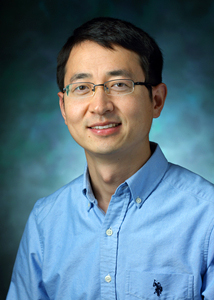报告题目:新型氯离子通道的分子鉴定和生理功能
Novel Chloride Channels: Molecular Identification and Physiological Function
特邀嘉宾:邱照铸
Assistant Professor
Department of Physiology, and Neuroscience
Johns Hopkins University School of Medicine, USA
时间:8月3日(周四)上午10:00-11:00
地点:趵突泉校区电镜楼三层会议室

特邀嘉宾:邱照铸
Dr. Zhaozhu Qiu received his Bachelor of Medicine degree from Shandong University (1997-2002). He obtained a PhD in Biochemistry from Columbia University College of Physicians and Surgeons in 2010 and then performed his postdoctoral training at the Scripps Research Institute and the Genomics Institute of Novartis Research Foundation in San Diego. In 2016, he joined the faculty in the Departments of Physiology and Neuroscience at Johns Hopkins University School of Medicine. The Qiu Lab employs a multi-disciplinary approach including high-throughput functional genomics, electrophysiology, biochemistry, and mouse genetics to discover novel ion channels and to elucidate their role in brain physiology and disease.
Representative publications:
1.Qiu Z, Dubin AE, Mathur J, Tu B, Reddy K, Miraglia LJ, Reinhardt J, Orth AP, Patapoutian A. (2014) SWELL1, a plasma membrane protein, is an essential component of volume-regulated anion channel. Cell. 157: 447-458.
2.Syeda R*, Qiu Z*, Dubin AE, Murthy SE, Florendo MN, Mason DE, Mathur J, Cahalan SM, Peters EC, Montal M, Patapoutian A. (2016) LRRC8 proteins form volume-regulated anion channels that sense ionic strength. Cell. 164: 499-511.
3.Ranade SS*, Qiu Z*, Woo SH, Hur SS, Murthy SE, Cahalan SM, Xu J, Mathur J, Bandell M, Coste B, Li YS, Chien S, Patapoutian A. (2014) Piezo1, a mechanically activated ion channel, is required for vascular development in mice. PNAS. 111 (28): 10347-52. *Co-first author.